Bearded dragons as pets are a great option for those interested in keeping reptiles. Known for their easy-going nature, intriguing behavior, and relatively straightforward care requirements, they’ve become incredibly popular. In this article, we’ll dive deep into what it takes to bring a bearded dragon into your home.
 Bearded Dragons At A Glance
Bearded Dragons At A Glance
Family: Agamidae
Class: Reptilia
Lifespan: 10-15 years
Length: 16-24 inches
Weight: 0.5-1.5 pounds
Energy Level: Low to moderate
Personality: Docile, curious, friendly, and relatively easy to handle
Temperament: Generally calm and non-aggressive
Intelligence: Intelligent reptiles that can respond to commands
History of Bearded Dragons
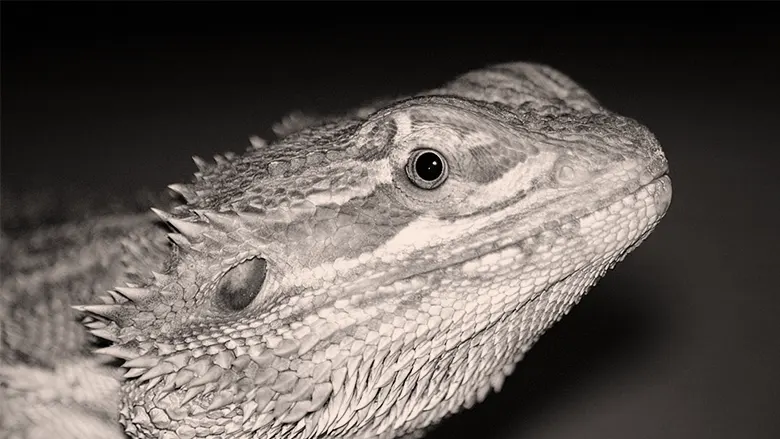
Originally, three species of the Pogona genus were known, which all came to be recognized as bearded dragons. In the mid-20th century, enthusiasts started breeding them domestically. Despite Australia’s ban on the export of wildlife in the 1960s, bearded dragons had already found their way into the hearts and homes of folks globally, mainly due to their adaptable nature and manageable size.
The Cost
Contrary to popular belief, the initial purchase price of a bearded dragon, which typically ranges from $40 to $100, is just the tip of the iceberg. The true costs lie in setting up and maintaining their habitat. This includes purchasing a terrarium, lighting, substrate, heating, and food, which can cost anywhere from $250 to $700, depending on the quality and brands of products chosen. Don’t forget additional expenditure on vet bills and potential health treatments!
Understanding Their Behavior
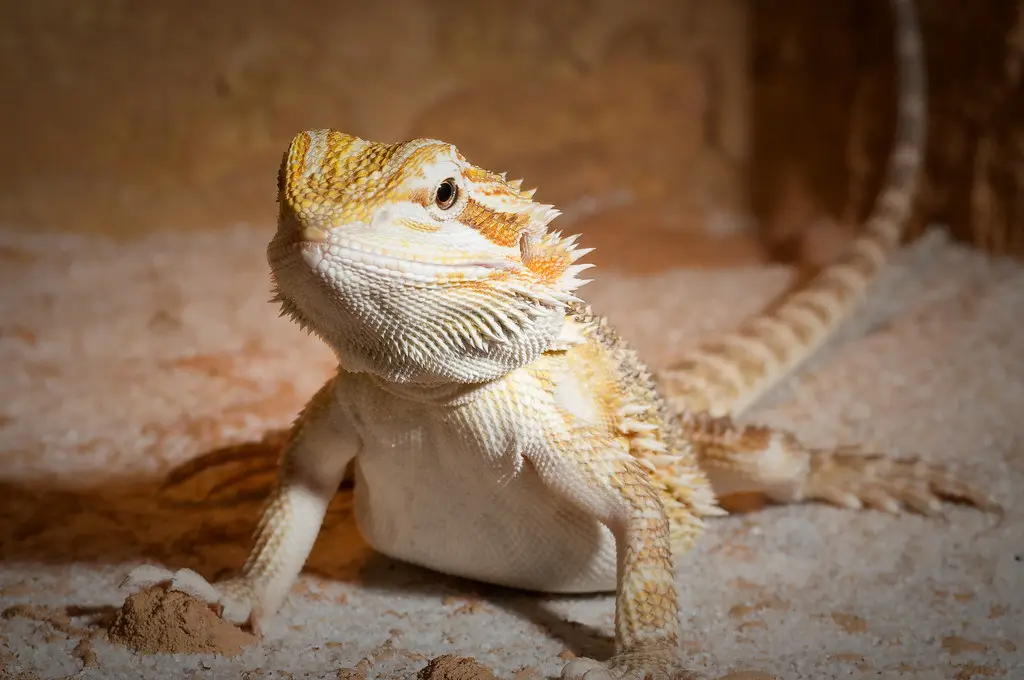
They are generally docile, easy-going creatures who enjoy basking and interactive play. You might also observe them “arm waving,” a behavior thought to be a form of communication, or “head bobbing,” which is often a display of dominance or mating behavior. Understanding these behaviors can deepen your bond with your pet. Let’s explain them in detail:
Body Postures
Bearded dragons use various body postures to communicate their feelings and intentions. An understanding of these behaviours will go a long way in creating a strong bond with your pet.
Basking
Basking is a common practice that bearded dragons indulge in to soak up heat and UV radiation, critical for digestion and skin health. You may see your dragon often lying flat under the heat source, a clear signal they are basking.
Beard Puffing
Bearded dragons have earned their name from their ability to puff out the skin under their throats, resembling a beard. This beard can even darken in color. It’s a defense mechanism often enacted when they feel threatened. However, in captivity, it can also indicate stress, an issue with their habitat, or a health problem.
Head Bobbing
Head bobbing ranges from a slow dip to a rapid nod and is a form of communication in the bearded dragon world. Rapid bobbing typically signals dominance or aggression, often seen in males. On the other hand, slow and submissive nodding usually is a sign of submission, often displayed by females or younger dragons.
Arm Waving
Arm waving is a fascinating and adorable display, where a bearded dragon stands on three legs and slowly waves the other in a circular motion. This behavior is predominantly a submission signal, frequently displayed by younger dragons or females towards more dominant dragons.
Social Interactions
Despite being solitary animals by nature, bearded dragons display certain social behaviors worth noting.
Territorial Behavior
Bearded dragons are territorial creatures, with males especially exhibiting territorial behaviors like head bobbing, puffing their throat, or even chasing and nipping at intruding dragons. Given this tendency, it’s typically best to house dragons separately.
Mating Behavior
Male bearded dragons showcase unique behaviors during courtship, such as rapid head bobbing, puffing out their beard, and stomping their feet. Females, if receptive, respond with slower, more submissive head nods.
Feeding Behavior
Understanding the feeding behavior of bearded dragons is key to ensuring their nutritional health.
Chasing Prey
Bearded dragons are omnivores, enjoying a variety of insects and vegetables. Seeing your dragon excitedly chase after live insects is perfectly normal and also a form of exercise in captivity.
Color Changes
The color of a bearded dragon can also reflect its behavior. A darkened beard might signify stress or anger, while a paler body color often denotes relaxation and happiness. Pale colors can also be noted during brumation, a hibernation-like state in cooler months.
Appearance of Bearded Dragons
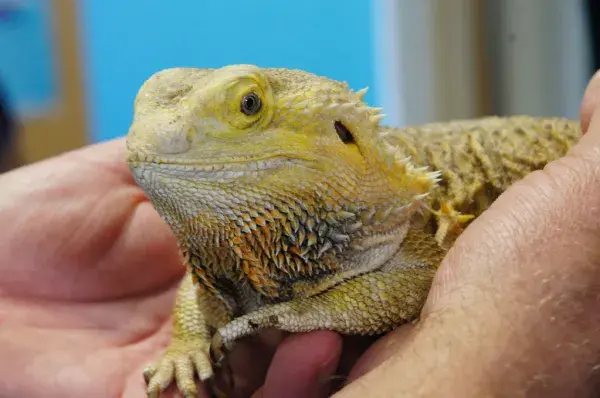
These lizards owe their name to the spiky, expandable pouch beneath their necks which, when puffed up, looks like a beard. Colors range from sandy hues to fiery oranges and deep reds, depending on their genetic lineage. They have a robust body, a broad triangular head, and adults can grow up to 24 inches including the tail.
Bearded Dragon Diet
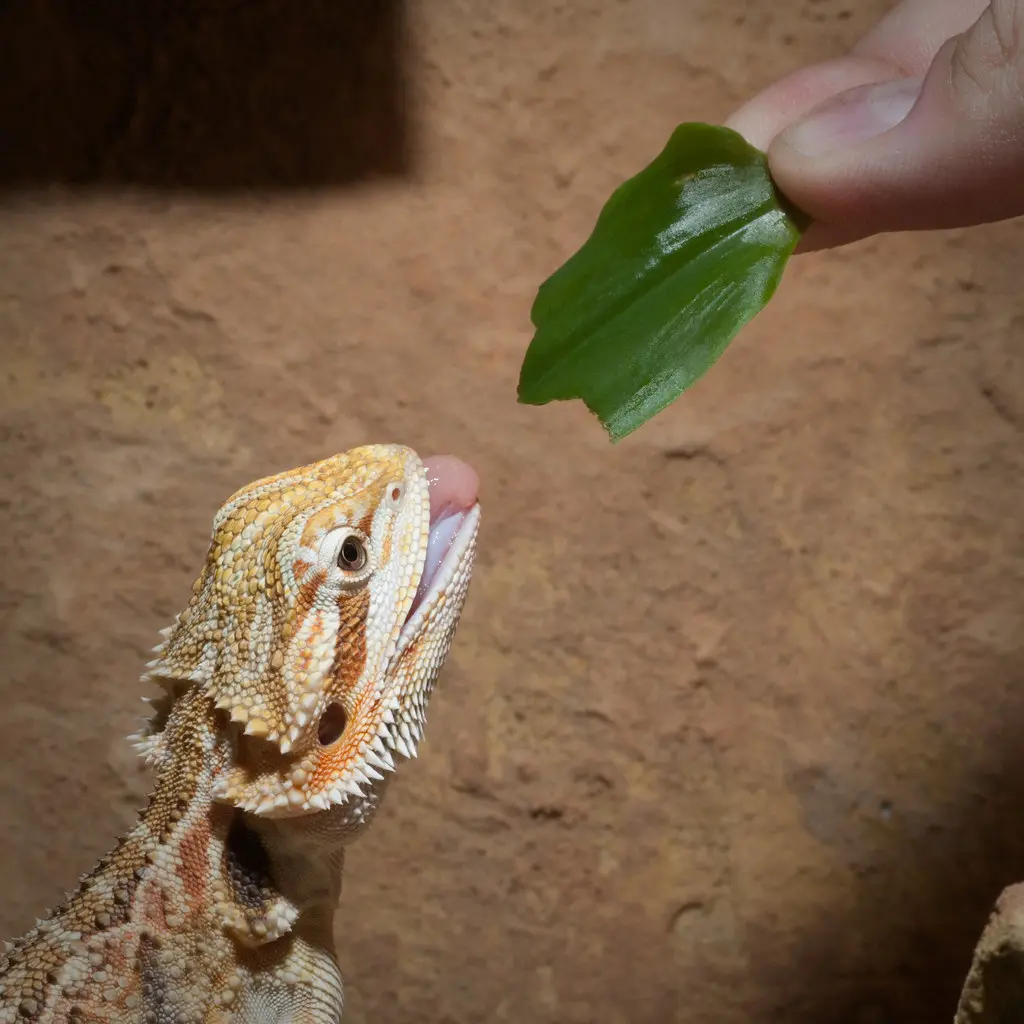
While bearded dragons are omnivores, what they eat should resemble their natural diet, consisting of both insects and plant matter. They are as follows:
Insects
Insects, especially for juvenile bearded dragons, provide an abundance of protein needed for development and growth. Common feeder insects include crickets, roaches, mealworms and earthworms. Make sure to provide a variety of insects and only feed in moderation due high fat content. Juveniles need more insects while adults can reduce insect portions. Dust feeder insects with calcium and multivitamin supplements before feeding.
Leafy Greens and Vegetables
As your bearded dragon matures, plant matter should make up an increasing percentage of the diet. Feed leafy greens like collard, mustard and turnip greens daily. Vegetables ranging from squash and peppers to peas should also be included regularly. Offer small amounts of fruits like berries, apples, and pears as occasional treats.
Avoid Toxic and Nutritionally Empty Foods
Certain foods should always be avoided as they are toxic, offer no nutritional value or may cause digestive upset. This includes avocados, fireflies, iceberg lettuce, spinach, beet tops and citrus fruits.
Provide a Balanced and Varied Diet
The key to your bearded dragon’s health lies in offering a wide variety of safe plant and insect foods while avoiding the wrong choices. Ensure different feeder insects, leafy greens, vegetables and small fruit portions on a rotating basis. A diet that closely mimics their omnivorous natural diet will keep your bearded dragon happy and healthy for years to come.
Grooming and Care

Not only do grooming and care routines enhance the physical appearance of your bearded dragon, they also play an integral role in maintaining its wellbeing.
Regular Bathing
Bathing your bearded dragon offers numerous benefits. It aids in the hydration of the dragon, assists with shedding, and encourages bowel movements. Use a shallow tub with lukewarm water to allow your dragon to comfortably wade. The water level should not exceed their shoulders. Baths can be introduced into their routine once or twice a week, each lasting about 15 minutes. After each bath, gently pat dry your bearded dragon to prevent any skin issues from remaining damp.
Skin Care & Shedding
Shedding is a natural part of a bearded dragon’s life cycle, typically more frequent in younger dragons due to their rapid growth rate. You’ll notice a duller color and a white, flaky skin, signaling the shedding process is beginning. To help your dragon, ensure they have access to scratching surfaces in their enclosure. Further facilitate smooth shedding by ensuring their environment is humid during this period and giving them regular baths.
Remember, never peel off the shedding skin as it can harm your dragon.
Nail Clipping
Left unchecked, a bearded dragon’s nails can become quite sharp and potentially injure them or their owners. Regular nail trimming is essential, using a specialized nail clipper for reptiles. Take care to avoid cutting into the quick (the nail’s blood vessel) as it might cause bleeding and pain.
Oral Hygiene
Like any pet, bearded dragons can encounter dental and oral problems. Regular check-ups can spot mouth rot, loose teeth, inflammation, or sores. Consult with a vet for any issues, and consider gentle oral cleaning using a soft swab if directed.
Parasite Prevention
Like all pets, bearded dragons can harbor parasites which may have harmful effects if left untreated. These may include mites and ticks on the skin, or gastrointestinal parasites like worms or protozoa. Regular parasite examination and preventive treatments as guided by your vet can help avoid these issues.
Regular Vet Check-ups
Include your bearded dragon in your family’s regular vet rotation, aiming for at least an annual wellness exam. This can provide opportunities for early detection of potential health issues such as metabolic bone disease, respiratory illness, or cancer. If your bearded dragon shows any sign of lethargy, weight loss, loss of appetite, or behavioral changes, it’s a good time to consult your vet too.
Clean Living Environment
Bearded dragons thrive in a clean, well-maintained environment. Clean up any food remains, feces, and soiled substrate soon after you notice them. Conduct thorough cleaning of the entire tank weekly, where the substrate is replaced, and the enclosure, food, and water containers are cleaned and disinfected.
With these care and grooming measures in mind, your bearded dragon will not only be physically appealing, but also live a healthy, happy, and comfortable life. Remember to approach each routine with gentleness and patience, gaining your dragon’s trust incrementally. Over time, these grooming and care routines will form an essential aspect of bonding with your cherished pet.
Exercise
Like all pets, exercises are vital for bearded dragons. Regular out-of-the-cage times, climbing opportunities within the cage, and interactive toys can ensure your bearded dragon stays in top shape. Some even enjoy supervised “walks” around your home!
Health Issues
While generally hardy, bearded dragons can suffer from health issues like metabolic bone disease due to poor diet or insufficient lighting. Parasitic infections, respiratory diseases, and impaction from ingesting substrate or unsuitable food items can also occur. Regular vet check-ups and preventative care are key to good health.
Housing Options
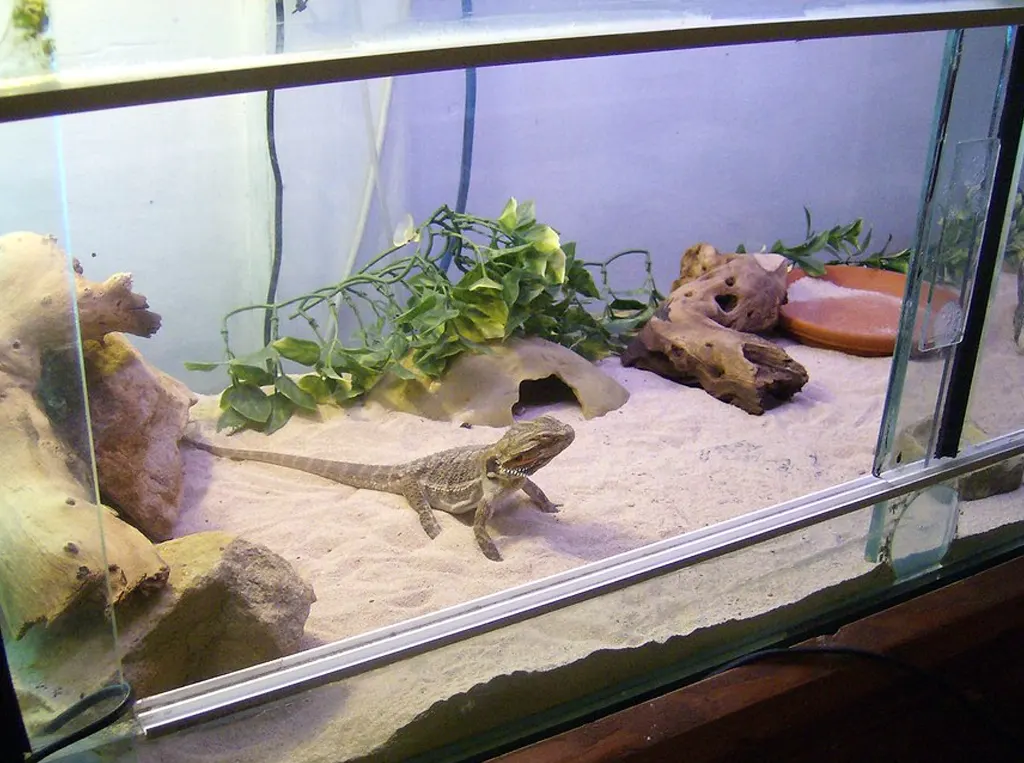
Choosing the right housing option for your bearded dragon is important for their comfort, safety, and overall well-being. There are two main categories of housing options: terrariums and custom enclosures. Terrariums include glass and PVC options, while custom enclosures include melamine cages and wooden enclosures. Once you’ve selected a suitable housing option, make sure to address key aspects such as size requirements, temperature and lighting, substrate, decor and enrichment, and ventilation.
Size Requirements
Making sure your bearded dragon has ample space is critical. Standard terrarium sizes often range between 20 gallons (for hatchlings) and 75 gallons or more (for adults). However, larger enclosures can offer better enrichment and prevent stress caused by confinement.
Temperature and Lighting
Bearded dragons require a well-regulated temperature gradient within their enclosure, which includes a basking area (95 to 110°F), a warm area (80 to 90°F), and a cool area (75 to 85°F). Temperature adjustments can be achieved using appropriately placed heating elements like heat lamps or under-tank heaters.
Bearded dragons also require a UVB light source, essential for their overall health and preventing metabolic bone disease. Ensure the UVB bulb is replaced every six months, as its effectiveness decreases over time.
Substrate
Choosing the right substrate is essential for your bearded dragon’s comfort and hygiene. Appropriate substrates include reptile carpet, ceramic tiles, or newspaper. Avoid using loose, particulate substrates like sand, as they can lead to impaction if ingested.
Decor and Enrichment
Create a stimulating environment for your bearded dragon by furnishing their enclosure with elements like:
- Hides: Offer private hiding spots for security and retreat.
- Climbing Opportunities: Incorporate branches, rocks, or ramps for climbing and exercise.
- Plants: Place non-toxic plants for added visual appeal and a natural touch.
Ventilation
A well-ventilated enclosure prevents humidity buildup, mold growth, and unpleasant odors. Screened lids or built-in ventilation grills ensure proper airflow while securing the enclosure from potential escapes.
Breeding Bearded Dragons

Breeding these creatures requires understanding their mating process, ensuring they’re healthy and old enough to breed, and providing appropriate egg-laying conditions. It is not for casual pet owners and should only be attempted after thorough research and preparation.
Preparing for Breeding
Before introducing two bearded dragons for mating, ensure both are healthy, reach sexual maturity (generally at around one year old) and are of appropriate size. A vet check-up is recommended to ensure good health and confirm the female’s ability to handle egg production and laying process.
Understanding Your Dragon’s Sex
Identifying the sex of your dragon is important before breeding. Males generally have larger, more triangular heads, broader tails at the base, and two distinct bulges at the tail’s underside. In contrast, females tend to have smaller heads, a slender tail, and only one bulge.
Courtship Behavior
Courtship behaviors in bearded dragons are distinctive. Males will start by stomping their feet, bobbing their head rapidly, and puffing out their beard, indicating their interest. A receptive female typically responds with submissive slow nods. Occasionally, the male may appear aggressive during courtship, gently biting the female’s neck during the actual mating act.
Post-Mating Care for Females
Females will need specific care post-mating. It’s pivotal to provide them with a lay box filled with moist sand or soil where she can bury her eggs. Increase her calcium intake since egg production requires substantial calcium, which, if not adequately supplemented, can lead to metabolic bone disease.
She will lay her eggs about 4-6 weeks after mating. Females can lay about 15-30 eggs per clutch and potentially have multiple clutches from a single mating, due to sperm storage.
Incubating the Eggs
Eggs need to be carefully excavated from the lay box, maintaining their original position to avoid harming the embryo inside, then placed in an incubator which holds a steady temperature (generally between 80-85 degrees Fahrenheit) and humidity level.
Hatching and Caring for Bearded Dragon Babies
Eggs usually hatch between 50-75 days, depending on the incubation temperature. Hatchlings do not require feeding immediately, as the yolk sac provides nourishment early on. After a couple of days, you can commence feeding them small crickets and finely chopped vegetable matter.
Up to anywhere from 3 to 6 weeks, they will shed their skin for the first time, indicating their growth. Maintaining an appropriate temperature gradient, UVB light exposure, and a safe, clean environment are equally vital for hatchlings as for mature dragons.
Fun Facts About Bearded Dragons
- Bearded dragons can change their color to help regulate their body temperature.
- Their “beard” is a defense mechanism to scare off potential predators.
- Bearded dragons have a third eye, known as a parietal eye, sensitive to light and shadow.
- They have five toes on each foot, each with a long claw.
- Beardies are known to “wave” their arms to signify recognition.
- Although mostly kept in isolation, they can cohabit peacefully under the right conditions.
- Bearded dragons can’t see well in the dark, despite popular belief.
- They can live up to 10-15 years in captivity with proper care.
- An average bearded dragon can run up to 9 miles per hour!
- Bearded dragons can enter a dormant period, similar to hibernation, called brumation.
Conclusion
Now that you have an in-depth understanding of bearded dragons, you should feel more equipped to welcome one into your home. They are great pet choices for those who appreciate an interactive and engaging companion. With time, patience, and proper care, a bearded dragon can become not just a pet, but a family member. Happy dragon keeping!
